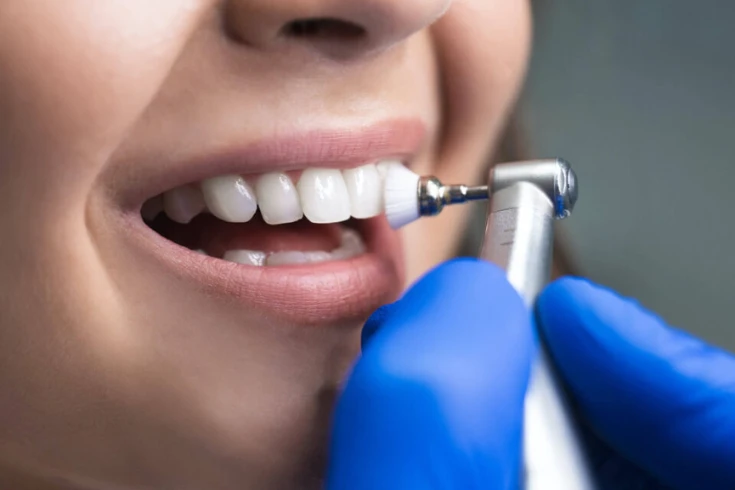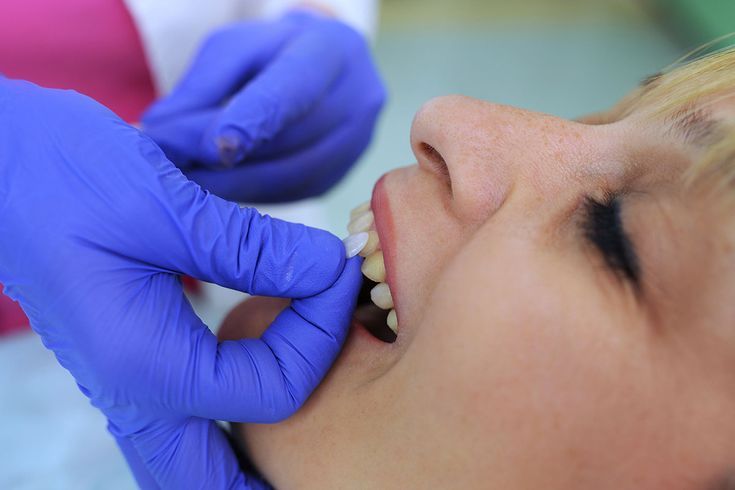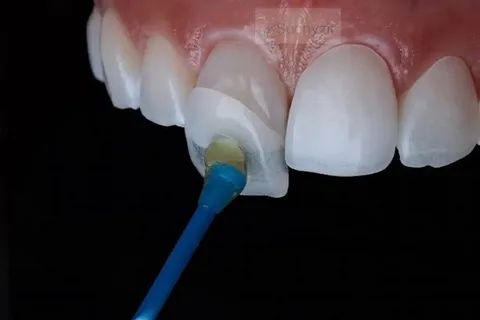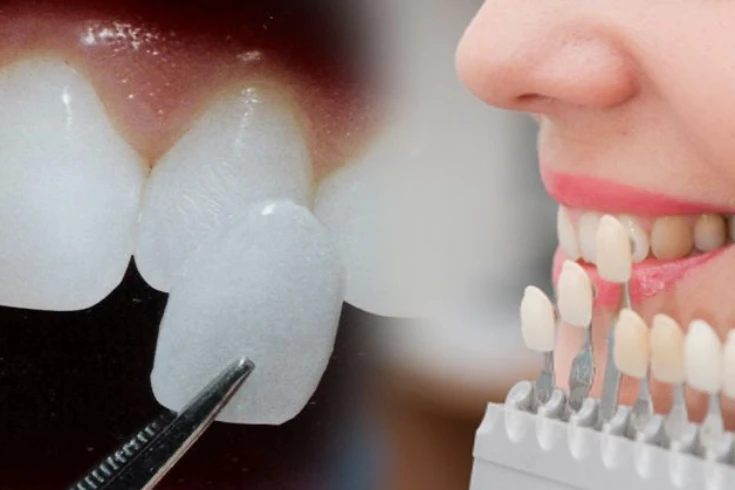Good oral hygiene is the pathway to a healthy smile. Professional dental cleaning aids in preventing many dental problems. There are several types of dental cleaning, each aimed at a particular need of the patient. In this blog, we will discuss the types of dental cleaning, who needs it, what they include, and their advantages. Whether one is simply looking to maintain his or her smile or is concerned about a particular dental problem, this guide will help the individual understand which type of dental cleaning best suits him or her.
The Importance of Dental Cleanings
Before describing the types of dental cleanings, it should be pointed out why they are so important. Professional dental cleaning is aimed at removing plaque, tartar, and stains that accumulate on the teeth and cannot always be removed with regular brushing and flossing. Over time, plaque hardens into tartar, or calculus, which then can only be removed by a dental professional. If these buildups are not taken care of, it may result in such issues as cavities, gum disease, or even tooth loss.
Dental cleanings are a very important preventive measure in the following ways:
- Preventing cavities: The removal of plaque prevents tooth decay and further complications like infection of the interior of the tooth.
- Halting gum disease: When tartar forms near the gum line, it could lead to gingivitis or periodontitis.
- Improvement of oral hygiene: Pro cleaning gives you a fresh start, and you can continue from there with your usual oral care.
- Whitening of teeth: Cleanings take away stains on the surfaces of teeth-usually brown from coffee, tea, and smoking.
- Overall health promotion: Issues such as heart diseases and diabetes have been associated with gum diseases.
Now, let’s look in detail at these four main types of dental cleaning and what all is included in them.
Prophylaxis Cleaning (Regular Cleaning)
What does the word Prophylaxis Cleaning mean?
Prophylaxis cleaning, more commonly referred to as a regular cleaning, is the most common type of dental cleaning. This type of cleaning should be performed on patients who have healthy gums without any active periodontal disease. The primary focus of this procedure is to prevent plaque and tartar buildup before they can cause more serious dental problems, such as cavities or gum disease.
Who Needs a Prophylaxis Cleaning?
If you visit the dentist regularly-that is, every 6 months or so-and if you do a fairly good job with your home oral hygiene, then you are most likely receiving what’s called a prophylaxis cleaning. This type of cleaning is best suited for patients who have healthy gums and thus need only a preventive maintenance checkup in addition to light plaque and tartar removal.
Prophylaxis types of dental Cleaning: How It’s Done
A prophylaxis cleaning would typically include the following:
- Physical Exam: The dental hygienist shall first examine your teeth and gums for any trace of gingivitis or any other oral problems.
- Scaling: The hygienist would scrub off plaques and tarter from the area where your teeth meet the gums and in between your teeth using special tools.
- Polishing: After scaling, the hygienist uses a high-powered electric brush and gritty toothpaste to remove surface stains and leave the tooth surfaces smooth.
- Flossing and Rinsing: The hygienist will floss between your teeth to remove any debris and have you rinse your mouth with a fluoride solution to protect your enamel.
Benefits of Prophylaxis types of dental Cleaning
- Prevents cavities and gum disease.
- Keeps your teeth looking bright and polished.
- Removes plaque and tartar that brushing and flossing miss.
- It helps in healthy teeth and gums. It is done as part of regular dental practice, usually once every six months.
Scaling and Root Planning
What is Scaling and Root Planning?
Scaling and root planning commonly known as a deep cleaning, is a deeper types of dental cleaning for patients who have gum disease-gingivitis or periodontitis. This type of cleaning reaches between the gum line and into pockets where the bacteria have formed an infection that includes some degree of inflammation.
Who Needs Scaling and Root Planing?
Your dentist may recommend a deep cleaning when he notices bleeding gums, receding gums, or deep pockets between teeth and gums. This is to stop further advancement of gum disease and to prevent loss of teeth.
Scaling and Root Planning Procedure
Scaling and root planning are typically done in two stages. They may be performed in more than one visit, depending on the extent of your disease.
- Scaling: The dentist or hygienist removes plaque and tartar from above and below the gumline, down to the bottom of the pocket. The dentist will use hand instruments or ultrasonic devices in scaling.
- Root Planing: After scaling, the dentist will smooth the surface of the tooth roots to discourage further bacterial buildup and to help the gums reattach to the teeth.
The dentist will use local anesthesia to lessen any discomfort during the procedure. The dentist will also prescribe an antibiotic to help fight the infection.
Scaling and Root Planning types of dental cleaning Benefits
- Gingivitis no longer progresses.
- Inflammation and bleeding of gums decrease.
- Tooth loss is avoided by regaining health in the gums.
- Stimulates reattachment of gums to the teeth.
Scaling and root planning is a very important form of treatment for patients suffering from gum diseases, and follow-up is necessary to check on the progress of such scaling and to avoid recurrence.
Periodontal Maintenance type of dental Cleaning
What is a Periodontal Maintenance Cleaning?
Periodontal maintenance cleaning is a special types of dental cleanings for patients who have previously received treatment for periodontal diseases. Once you have completed scaling and root planning or any other periodontal treatment, you will need regular cleanings to avoid the return of the disease.
Who Needs Periodontal Maintenance Cleaning?
If you have a medical history related to periodontal disease or have undergone treatment for periodontal diseases, then your dentist may recommend periodontal maintenance cleanings every three to four months. Such frequent cleaning helps in keeping the bacterial load of the mouth under control and halts gum diseases.
Procedure of Periodontal Maintenance Cleaning
The periodontal maintenance cleanings are the types of dental cleaning that resemble the prophylaxis cleanings but are more intense in their nature. The procedure includes:
- Examinations: The dentist or hygienist will examine your gums for recurring active gum disease, including deep pockets or gum recession.
- Scaling: Scaling removes plaque and tartar below and above the gum. Special attention will be given to the deeper periodontal pockets where the bacteria are accumulating and actively causing inflammation.
- Root Planning: Further, root planning may again be necessary to smoothen the rough surfaces on the roots of the teeth.
- Antibacterial Rinse: The dentist will use a medicated rinse to kill the bacteria.
How Periodontal Maintenance Cleaning Works
- Prevents further re-occurrence of periodontal disease.
- Gums and bone structures remain healthy.
- The need for surgical periodontal treatments is minimized.
- You can retain your teeth longer.
This types of dental cleanings are crucial for anyone who has experienced gum disease, as they offer ongoing protection against further oral health complications.
Gross Debridement Cleaning
What is Gross Debridement types of dental Cleaning?
Gross debridement cleaning is an aggressive cleaning for those patients who have suffered long-term neglect of oral hygiene, which eventually results in excessive plaque and tartar buildup. It is more extensive than a prophylaxis cleaning and is usually a first step before other dental treatments can be provided.
Who Needs Gross Debridement Cleaning?
For patients who have not been to the dentist in many years, or who have especially heavy tartar buildup in the mouth that prevents an accurate dental examination, gross debridement may be necessary. The cleaning will prepare the teeth for further examination and more routine cleanings.
Procedure of Gross Debridement types of dental Cleaning
The process of gross debridement cleaning includes the following steps:
- Evaluation: The dentist will evaluate your teeth and gums to determine the level of plaque and tartar buildup.
- Scaling: The hygienist utilizes both hand-held instruments and ultrasonic tools to break up and remove large amounts of plaque and tartar on your teeth. This can be more time-consuming than a normal cleaning, depending on how much has built up.
- Follow-up Exam: After the gross debridement has been completed, the dentist may wish to make a follow-up visit to carry out a more intense cleaning and examination.
Gross Debridement types of dental cleaning Advantages
- It restores the ability to conduct a proper dental examination.
- Prepares the teeth for subsequent treatments.
- Long-term oral neglect is reversed.
- Prevents worse dental problems from arising.
Gross debridement cleaning is required for those patients who have been unable to keep up with standard dental hygiene and is typically a first step in the process of reclaiming good oral health.
How Often Does One Need Dental Cleanings?
How often you need dental cleanings depends on your individual oral health needs. Most patients love and benefits derived from getting a prophylaxis cleaning every six months. However, for patients with a history of periodontal disease, they may require periodontal maintenance cleanings every three to four months. Sometimes, when there is full-blown buildup, a gross debridement is done first, after which the regular cleanings are performed.
Factors Affecting different types of dental Cleaning Frequency:
- Oral hygiene habits: Those who floss regularly and brush, cleanings every six months will be enough.
- Gum diseases: For people suffering from periodontal problems, cleanings within a short time are necessary.
- Medical conditions: Different medical conditions, for example, diabetes, put you at risk in gum diseases. Hence, there is a need for cleaning in a short time.
- Smoking: Smoking puts you at a risk for gum diseases that may be in need of frequent cleaning.
Conclusion
Dental cleaning is the cornerstone of good oral health. Preventing everything from cavities and gum disease to much more serious issues is regular dental cleaning. Whether you require a prophylaxis cleaning to maintain your healthy smile, a scaling and root planning to treat gum disease, a periodontal maintenance cleaning to prevent recurrence, or a gross debridement to address years of negligence.
FAQ’s
- What is a prophylaxis cleaning?
A prophylaxis cleaning, commonly known as a regular cleaning, is a routine dental cleaning for patients with healthy gums and no active periodontal disease. It involves removing plaque and tartar to prevent cavities and gum disease.
- Who needs a prophylaxis cleaning?
Patients who maintain good oral hygiene and visit the dentist regularly (every six months) typically need a prophylaxis cleaning. It is a preventive measure for those with healthy gums.
- What is the difference between prophylaxis cleaning and scaling and root planning?
Prophylaxis cleaning is a routine cleaning aimed at maintaining healthy gums, while scaling and root planning, also known as deep cleaning, is a more intensive procedure used to treat gum disease by removing plaque and tartar from below the gumline and smoothing the tooth roots.
- What is scaling and root planing?
Scaling and root planning is a deep cleaning procedure performed to treat gum disease. It involves removing plaque and tartar from below the gumline and smoothing the root surfaces of teeth to encourage the gums to reattach.
- Who needs scaling and root planning?
Patients with signs of gum disease, such as bleeding or receding gums and deep pockets between the teeth and gums, typically need scaling and root planning to prevent further damage and promote gum healing.





